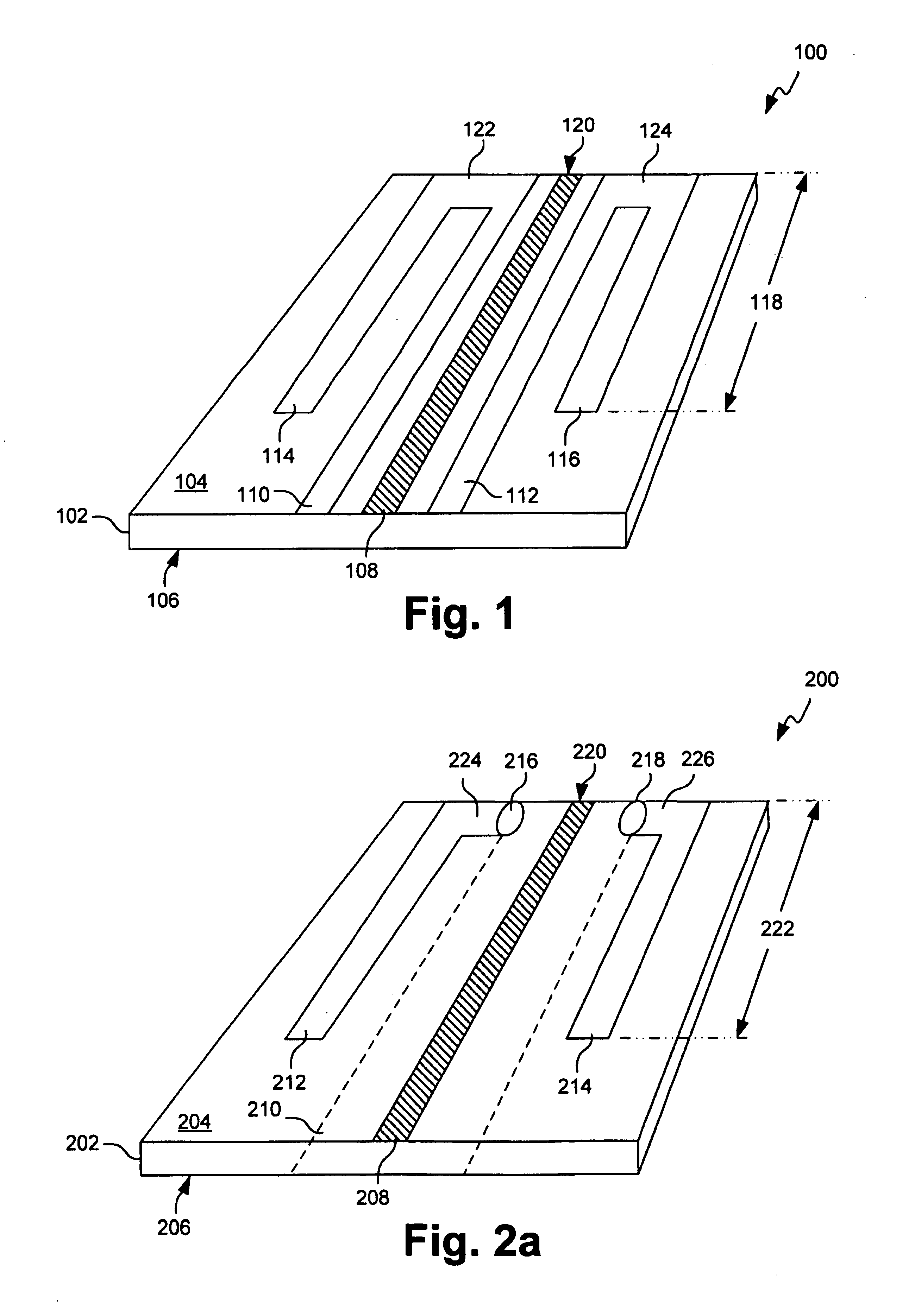Effectively balanced dipole microstrip antenna
a dipole antenna and microstrip technology, applied in the structure the antenna feed intermediate, the resonance antenna, etc., can solve the problems of reducing the efficiency of the radiating elemen
- Summary
- Abstract
- Description
- Claims
- Application Information
AI Technical Summary
Benefits of technology
Problems solved by technology
Method used
Image
Examples
Embodiment Construction
[0030]FIG. 1 is a perspective drawing of one aspect of the present invention planar balun. As explained in more detail below, the planar balun is connected to the transmission line interface of an unbalanced microstrip antenna (not shown is this figure). The combination of planar balun, with the unbalanced microstrip antenna, results in a balanced antenna. That is, the overall result is a balanced antenna, referred to herein as an effectively balanced dipole antenna that minimized transmission line radiation.
[0031]More specifically, FIG. 1 depicts a coplanar balun 100. The coplanar balun 100 includes a dielectric layer 102 with a first side 104 and a second side 106 that cannot be seen in this view. An unbalanced coplanar transmission line is shown, with a signal line 108 (cross-hatched lines) interposed between a pair of coplanar grounds 110 and 112, on the dielectric layer first side 104. A pair of planar stubs 114 and 116 is formed in the dielectric layer first side 104. Each stu...
PUM
 Login to View More
Login to View More Abstract
Description
Claims
Application Information
 Login to View More
Login to View More - R&D
- Intellectual Property
- Life Sciences
- Materials
- Tech Scout
- Unparalleled Data Quality
- Higher Quality Content
- 60% Fewer Hallucinations
Browse by: Latest US Patents, China's latest patents, Technical Efficacy Thesaurus, Application Domain, Technology Topic, Popular Technical Reports.
© 2025 PatSnap. All rights reserved.Legal|Privacy policy|Modern Slavery Act Transparency Statement|Sitemap|About US| Contact US: help@patsnap.com



